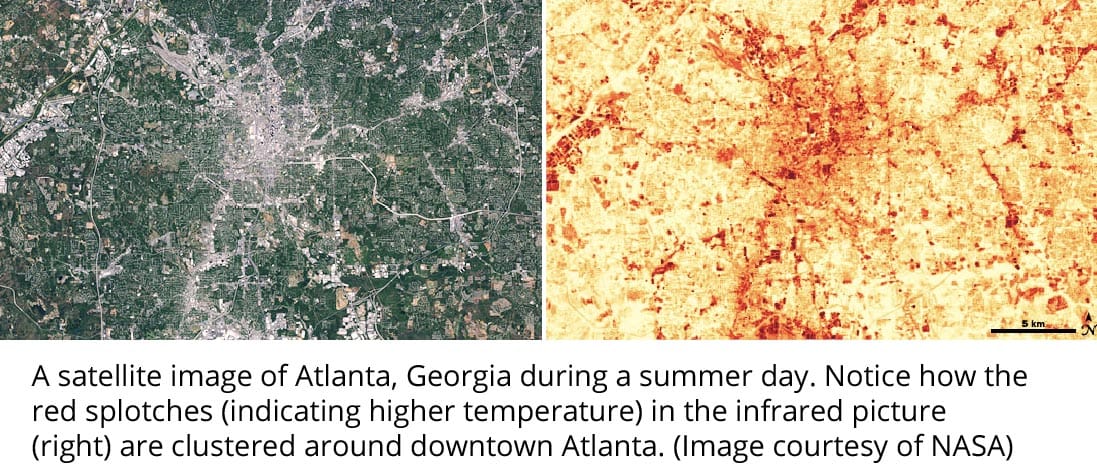Concrete is Cooler
If you were to look at a map of the US using infrared technology, you would see the cities light up in red. This is due to the urban heat island effect, a phenomenon where cities experience higher temperatures than less urban surroundings. This effect occurs when tree-covered areas are replaced with dark pavement surfaces, like asphalt. Dark pavements absorb 80-95% of sunlight causing them to heat up, and the higher the temperature, the more pollutants are produced. While replacing asphalt with concrete will not have the same effect as returning a paved surface to a shaded forest, concrete is a lighter, more reflective surface. According to the EPA, if all urban and rural roads in the continental US were converted to reflective pavements, we could reduce CO2 emissions by 34,703 kilotons per year. That’s the equivalent of removing 7.4 million, or roughly 7 percent, of passenger vehicles from the road nationwide.

Concrete Improves Comfort & Health
Due to its cooler temperatures, concrete can drastically improve the quality of life within cities. Cooler pavement lowers the outside air temperature, making it more comfortable to be outside, reducing heat-related illnesses and slowing the formation of smog. These lower temperatures also allow air conditioners to cool buildings with less energy, which reduces the emission of greenhouse gases and other pollutants from power plants.
For more detailed information, check out the Resources page.

